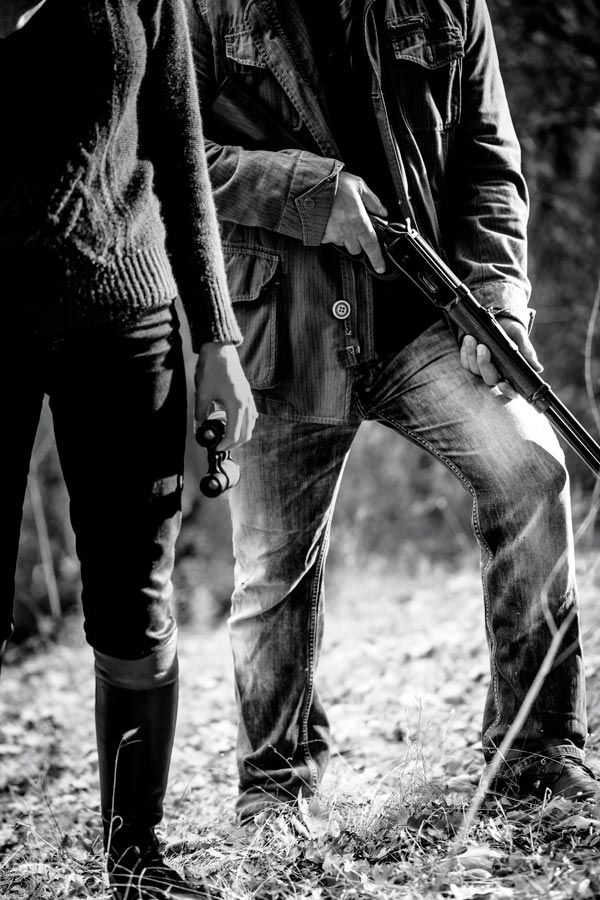
Healdsburg’s bounty offers everything necessary (and then some) for hunting, gathering, and a feast of epic proportions.
In Michael Pollan’s 2006 book, The Omnivore’s Dilemma (which famously brought to the table the complex realities of how what we eat gets to our plates), readers were introduced to Angelo Garro, a Slow Food protagonist, who hosted Pollan on a quest to kill and then feast upon a wild boar. It was one of four adventures that fueled the book’s argument for conscientious consumption. In October 2013, the SoMa resident, who runs Renaissance Forge (a metalworking studio he opened in 1984 that doubles as a venue for his famous dinner parties), turned to Kickstarter to fund the launch of Omnivore Salt, a hearty sea salt flecked with foraged fennel and organic spices, which is based on his grandmother’s recipe. Alice Waters has called the salt “indispensable.” And more than 3,000 backers agreed. Garro began online sales on Black Friday in 2013.
It was this man and his new pantry staple that inspired our own hunt, and the latter was sprinkled at the forthcoming communal supper, which my husband Hal and I hosted at our home in Healdsburg. As food lovers, we knew that it was a once-in-a-lifetime opportunity for us to learn on a visceral level about our local food chain. A locavore philosophy guided the occasion: Everything from the alpaca throws to the persimmons that went into making the chandelier were sourced from the Healdsburg area. A celebration of the region’s bounty called for notable dinner companions. So, we enlisted a James Beard–nominated chef, a local farmhand, an organic rancher, and others to join us for a potluck. They came and filled our plates with homegrown morsels and our glasses with local wines. We even found ourselves a boar hunter.
Clad in Diesel jeans and black D&G frames, the burly-bearded Dino Bugica starred as our hunter-gatherer. A 38-year-old Geyserville resident of Italian descent, Bugica learned the art of living and eating well from the women in his family. Born in Reno, Nevada, he moved to Italy when he was 18 to study butchery and winemaking under Tuscan masters and sharpened his chef skills in restaurants in Pisa and Versilia before moving to Northern California. After five years at Santi, a beloved eatery (now shuttered) in Geyserville, Bugica opened Diavola there in 2008. With exposed brick, warm wood floors, and hefty legs of meat hanging from hooks by the bar, Diavola would be at home in any rustic Italian hamlet. On the brick oven is emblazoned the head of a boar in a nod to Bugica’s specialty: transforming whole beasts into beautiful salumi and house-cured sausages. Bugica brought his beautiful cuts of meat and his mammoth, custom-made Argentinian-style grill to our hilltop meadow overlooking the vineyards of Dry Creek Valley.
Over the years, I’ve come to know the joys of eating in Wine Country. But to see the process from start to finish is something else entirely. As a recovering vegetarian, let me not mince words: It is a sensitive and solemn thing to kill an animal. But from hunting to dressing to serving our majestic beast, the process was a religious rite in the hands of a group that honored its life. We paid homage to our pig by celebrating it with the community from whence it came. We baked the wheat from nearby fields into bread, we garnished the cocktails with our garden’s herbs, and we fêted local businesses with every fruit, vegetable, cheese, and wine. It was our way of turning our dilemma—to kill or not to kill for food in a world of industrialized eating—into a true delight. Then, of course, we feasted. And it was epic.
FEASTING 101: Get the full menu, recipes, and vendors who contributed to the table here.
This article was published in 7x7's February issue. Click here to subscribe!
Related Articles

